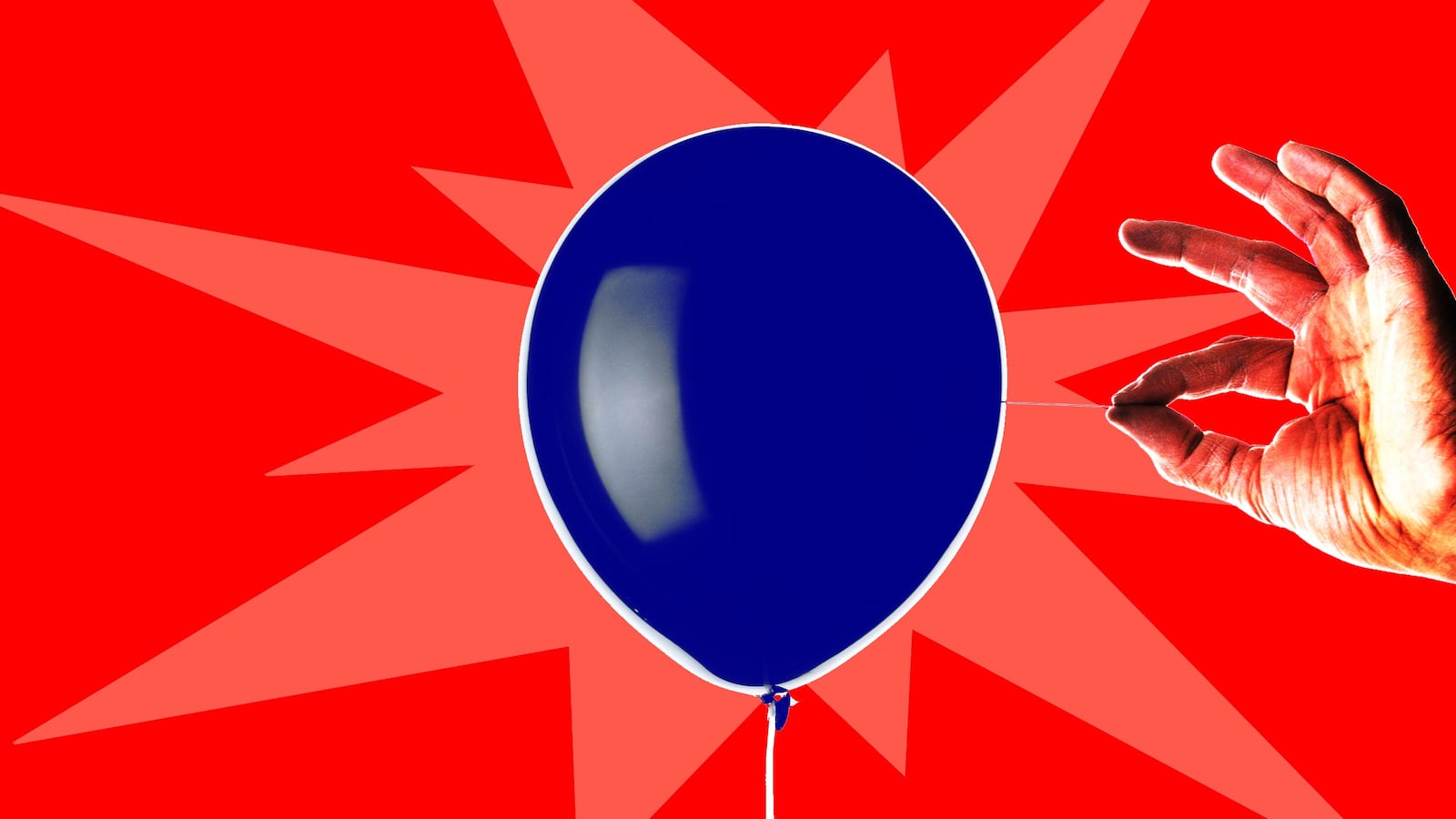In 2015, Ken Stern, the former CEO of NPR and a lifelong Democrat, left his liberal Washington, D.C., neighborhood, and over the course of more than a year, sought out Republicans across the country: in churches, on pig hunts, at Trump rallies, NASCAR races, and even on Steve Bannon’s radio show.
Stern believed, as Atticus Finch said in To Kill a Mockingbird, “You never really understand a person until you consider things from his point of view.” And when he did, he found fellow Americans whose values didn’t differ all that much from his own and, even where there was real disagreement, on things like guns, abortion, religion, and healthcare, the divide isn’t nearly as deep as we are led to believe.
The anger is very real, but we are more inflamed on the issues then we are divided.
Stern believes that you can break down that divide with a little listening, and a little human contact. He writes about what he found and how it changed him in Republican Like Me: How I Left the Liberal Bubble and Learned to Love the Right.
In the excerpt below, he describes the insularity that exists on his own street in Washington, D.C.
Hobart Street is just a single block, but it is long enough to have three rough geographic areas: Hi-Ho, for the area at the top of the hill near Mount Pleasant Street; Lo-Ho, at the bottom of the hill bordering Irving Street; and Mid-Ho, in between. I live in Mid-Ho.
Today, the Mount Pleasant neighborhood is tranquil and stately, populated by so many young families that it is occasionally referred to as “Mount Stroller.”
Mount Pleasant has undergone an accelerating re-gentrification over the last twenty years, which has resulted in a cultural and economic mix that is a significant part of the neighborhood’s charm: trendy Thai restaurants abutting bodegas, big-box stores looming over Salvadoran fast-food places. There is a little something for everyone, which is why Mount Pleasant is often described as “diverse” and “eclectic,” and we like it that way.
Our commitment to diversity is pretty complete when it comes to black, white, and brown, and to the rainbow colors of the gay pride flag, but it falls a little short when it comes to red and blue. The neighborhood is astonishingly Democratic and liberal. Hillary Clinton received 92.5 percent of the vote in the 2016 general election, and Jill Stein outpolled Donald Trump in my precinct by a narrow margin (74 votes to 70). During 2016, it was always very easy to spot a Bernie Sanders or a Black Lives Matter yard sign, but good luck finding one for Bush or Kasich, let alone Trump or Cruz.
In the past, I never paid much attention to the political homogeneity of Hobart Street, other than a joke here or there with my neighbors. Hobart Street and the Mount Pleasant neighborhood aren’t all that different from the wider city and, let’s face it, I fit in rather well, being a lifelong Democrat married to a Democratic staffer on Capitol Hill. It all seemed pretty natural, until Porch-fest.
Porchfest is the other main festival of the Hobart social calendar, our annual block party held each June. Virtually every house on the block contributes something: a food stand, music, home-brewed beer, a slip-and-slide for the kids. My wife, Beth, stays up all night baking cookies, which she cuts variously into the shape of the Washington Monument, the Capitol Building, and a map of the District of Columbia. Some she decorates herself, but others are left unfrosted so that the kids can wield the icing tubes like junior Jackson Pollocks. They do that with uncommon enthusiasm, if not complete coordination. For days afterward, our front steps look like the victim of a food-coloring balloon prank.
The highlight of Porchfest is the annual parade, which is always led by a marching band, a fire truck from the local firehouse, the same vintage convertible that appears each Porchfest and then is not seen again on Hobart Street for the rest of the year, and all the kids on the block, some riding bikes or scooters, others tunelessly playing musical instruments, or in the case of my 9-year-old son, Nate, randomly throwing a baseball up in the air. It’s all hopelessly chaotic, like a band in which all the musicians are playing from different sheet music, and it’s all wonderful. And every year the parade starts with the children reciting the “Hobart Street Pledge.” I always loved the pledge, at least the concept of it, that in our increasingly entropic world we share a community, an identity, a home here on Hobart Street. I loved the pledge, that is, until I bothered to listen to the words, which I discovered one year go something like this: “I pledge allegiance to Hobart Street Northwest. . . . Gay or straight, woman or man, all are welcome on Hobart Street—except for Republicans.
The end of the Pledge was meant to be all good fun, I suppose, except for the fact that it reflects an uncomfortable truth: As much as my neighbors on Hobart Street speak to the values of diversity and tolerance, they have no real interest in viewpoint diversity. I have tried, episodically and unsystematically, to find a Republican on Hobart Street. They must be there: our precinct is 94 percent Democratic, an astonishing number on its face, but that must mean there is still that 6 percent somewhere. It’s simple to find Democrats: Bernie banners? Yes. Hillary bumper stickers? Sure. Black Lives Matter yard signs? Plenty of them. An “Everybody SUCKS, We’re Screwed 2016” sign that pops up right after the election? You bet. But evidence of support for Bush, Kasich, Cruz, Carson, or Trump? No, no, no, no, and hell no.
Truth be told, in its political homogeneity, Hobart Street is not all that unusual. During the 2016 election, the Washington Post asked Virginia voters whether they had any family members or close friends who were supporting the opposing candidate. Fifty-four percent of Trump supporters and 60 percent of Clinton supporters reported that they had no family members and no close friends who were planning to vote for the other side. It is an extraordinary thing, if you think about it for a moment. Virginia was a closely contested state, swinging back and forth on election night, ultimately going to Hillary Clinton by just five points. But somehow a majority of Virginians had managed to arrange their friends and family to be entirely politically compatible. Amazing as it is, I must confess that it was the same for me as well, but at least I have the excuse of living in a single-party neighborhood.
★ ★ ★
We may dislike the other side, but we are not nearly as different from them as we like to think we are. There is a large body of evidence, all rather depressing, that demonstrates the limits of our knowledge and the frailty of our political decision making. In general, our view of policy and ideology is driven by signaling; that is, our political perspective is often shaped by what others are suggesting we should think rather than by any careful and independent consideration of the issues. The research on this goes a long way back and mostly suggests that political scientists like to fuck with voters.
In 2015, the Huffington Post asked people to react to the notion that “President Obama has praised the idea of universal health care.” Democrats were wildly supportive, with more than 80 percent agreeing, and Republicans were particularly unenthusiastic, with fewer than 20 percent agreeing. When the question was changed to say that Donald Trump has praised the idea (as in fact he once did), Democratic support immediately dropped in half, while Republican support more than doubled.
This dynamic is not just limited to political science games. When it was originally introduced, Common Core was one of those increasingly rare policies that drew support from across the political spectrum. As recently as 2013, it had incredible public support, at about 83 percent. But around then, the Tea Party, licking its wounds from its 2012 electoral disaster, latched on to the concept as an example of unwarranted federal intrusion on local governance, even though Common Core from inception was a state-driven initiative. Support for the idea quickly plummeted, so by 2016 only 35 percent of Republicans were willing to support Common Core. But when you describe what Common Core is—standards for reading and math that are the same across the states—without mentioning the “Common Core” brand, support among Republicans instantly pops up to more than 50 percent and strong opposition largely disappears, from 34 percent to 14 percent. Lest you think this is a Republican folly, the same dynamic holds true for Democrats, though a little less strongly, probably because Common Core is not an identity issue for Democrats.
All this research that we have been punching through for the last few pages shows how we have divided ourselves into partisan bubbles and the impact that has on our sense of self and our sense of the world. As other bonds of identity have weakened in American life—religion and membership in labor unions, for example—the draw and meaning of political parties as social identity has strengthened. The parties have become stalking horses for identity, and their successes have become more and more important to our own sense of self-worth.
Our increased polarization reflects many different things: our geographic sorting, our partisan media environment, the increased saliency of party to identity in modern life, and the fact that the political parties have become more uniform in their ideologies. What I have not mentioned in that list, though, is an increasing gap among Americans over policies, and that is be- cause that increasing gap does not exist. If you look at Americans’ views on key issues—abortion, immigration, environment, gay rights, taxes, size of government, and on and on—they haven’t changed very much over the years, even as we have become angrier about them all.
The person who has studied this the most closely, a Stanford political scientist named Morris Fiorina, has noted that if “one thinks about polarization in terms of positions on specific policy issues, one would expect to see a decline in the center and a lumping up of people on the extremes. We do not have long time series of attitudes toward particular policy issues since they rise and fall on the national agenda, but on most issues, attitudes continue to cluster in the middle rather than lump up on the extremes.” It leads to a fascinating insight. We are becoming angrier and more polarized not because of increasing issue disagreement but because we are increasingly participating in groupthink. When all the people you know, when all the people in your political sect agree with you, it becomes easy to relax in the certainty that you and your cohort are right, and the other side is not just wrong, but also taking a long, slow bubble-bath in the sea of craziness. When we don’t know the other side, when we don’t hear from them, when we don’t talk to them, when we can demonize them to our heart’s content, there are just no brakes on our sense of self-righteousness. Polarization is increasing because polarization is increasingly easy.
Excerpted from Republican Like Me: How I Left the Liberal Bubble and Learned to Love the Right by Ken Stern, published by Harper. Copyright 2017 by Ken Stern.



